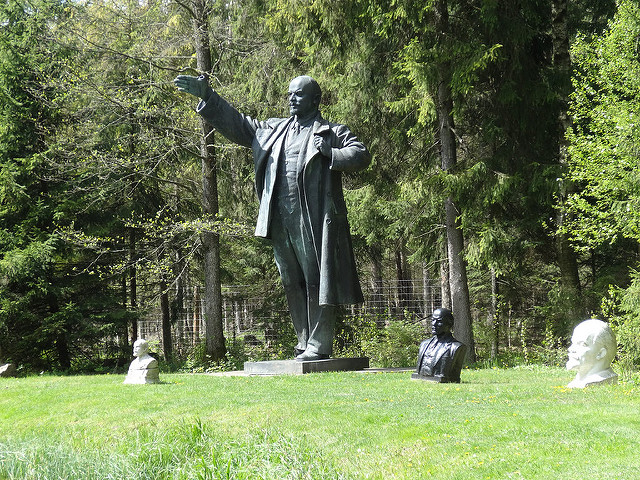
Like the other Baltic states, Lithuania felt the deadly embrace of the giant Eastern neighbor for centuries. A few decades after they regained their independence the country is still full of mementos of the Soviet regime. Some preserved, some crumbling, some built to commemorate the courage of the small nation in the final days of the Empire.
Soviet sites in Lithuania – The 9th Fort Museum
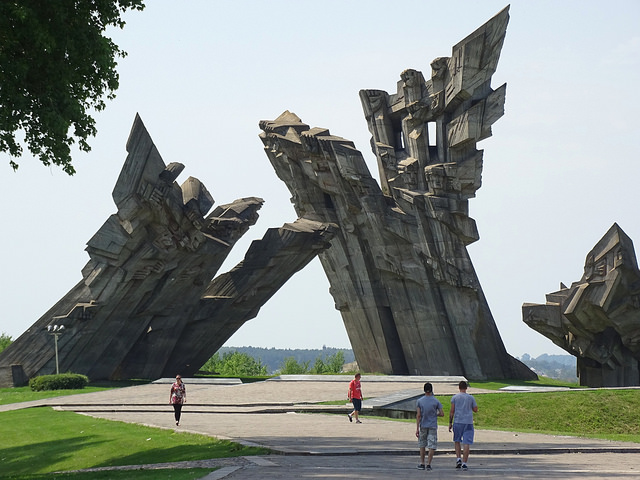
Photo by Adam Jones
The 9th fort in Kaunas (Kauno IX Forto) was constructed by tsarist Russia as a defense stronghold, but its darkest days came later. From the 20s the independent Lithuanian state utilized it as a prison. When Soviets occupied the Baltic states in 1940 the dreaded NKVD continued to use it, only they were locking up political prisoners bound for the Gulag.
When Nazis occupied the country it was a scene of terrible mass murders which a Holocaust memorial commemorates. In 1944 when Soviets retook Kaunas the fort was used as a prison again – with political prisoners and executions. Some places just have bad karma.. Now a museum operates in the building with permanent exhibitions depicting each of those horrible periods.
The KGB museum – A building serving authority
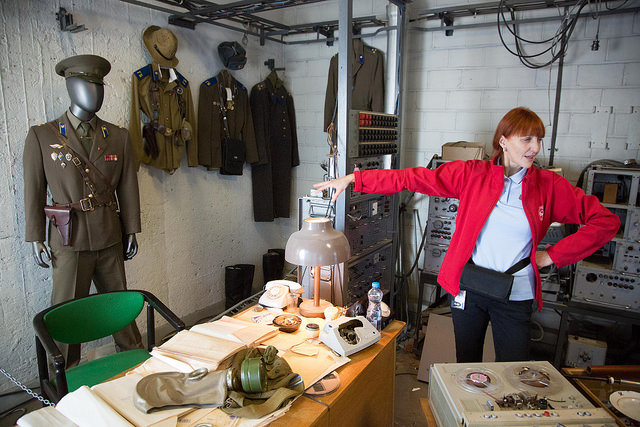
Photo via Flickr
Like the Fort Museum in Kaunas, the Vilnius Museum of Genocide Victims, or informally “the KGB museum” is located in an old tsarist building, and was used by Soviets and Nazis to imprison, torture and execute civilians. Used as headquarters by the tsar’s governor, German occupiers in WWI, Bolsheviks in the Civil War, the Polish magistrates, the Soviet occupiers in 1940-41, then the Nazis, the building was always a center of authority and violence.
When Soviets reoccupied Lithuania it was used as headquarters of the KGB. Over a thousand prisoners are estimated to have been executed in the building between 1944 and 1960, those detained and tortured must be many times that number. Now the building serves as a museum commemorating the victims, as well as accommodating a courthouse and the national archives.
The Cold War Museum – Plokštinė Missile Base
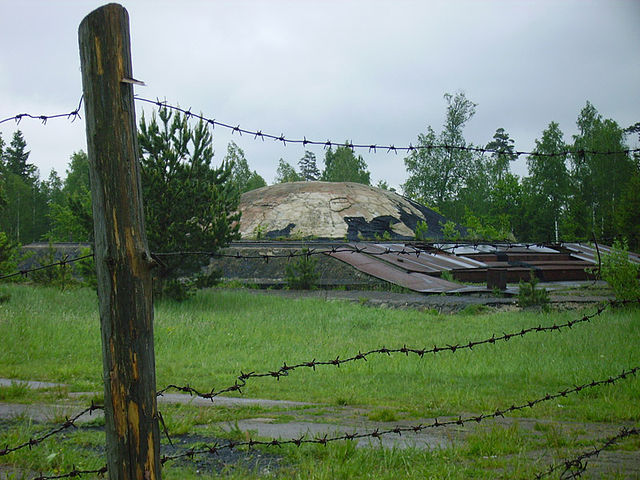
Photo in Public Domain
In the sparsely populated Plokštinė forest of Northwest Lithuania you can explore the first underground nuclear missile base of the Soviet Union. Constructed in 1960 the Plokštinė Missile Base is said to have supplied the rockets that almost caused the world to end in the 1962 Cuban Missile Crisis. The establishment was such a well-kept secret that NATO intelligence wouldn’t learn of its existence until 1978 – when the base was decommissioned.
Chosen for the secluded area, the easily excavatable soil and a location that put all of Western Europe in the range of the R-12 missiles, the base operated for 12 years. It fell into disrepair afterwards, but in 2012 some buildings were reconstructed, and it now hosts the Cold War Museum. The main attraction of the museum are the nuclear silos of course, but the exhibition also introduces other Soviet history, and life in the Eastern bloc in general.
Grūtas Park – probably the most fun among the Soviet sites in Lithuania

Photo by Jayway Travel
If you are to discover the best Soviet sites in Lithuania, Druskininkai is a very interesting place. No wonder it is an important stop of the Baltic Run! Outside the famous Baltic spa town is Grūtas Park, a bizarre theme park with relics of the Soviet occupation in Lithuania. Many public statues that had been removed were transported here by the dozens. Stalin, Lenin, Marx, Engels and partisans occupy the park, which also features Gulag-style barracks.
The huge relics of Soviet realism really are an extraordinary photo opportunity. Sit in Lenin’s lap, grab Stalin’s moustache or Marx’s beard, or pose with the guards in authentic uniforms – not many of your friends can say the same! The founder of the park, Viliumas Malinauskas received the Ig Nobel Peace Prize for it in 2001.
Druskininkai Spa – the old Soviet Hydroklinika reborn
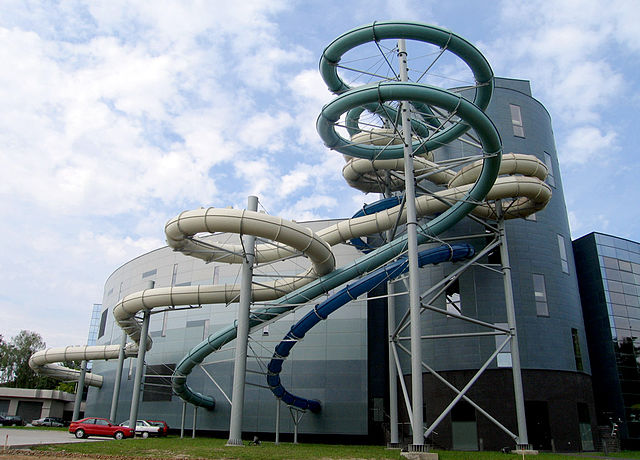
Photo by Mano Darbas
You might not be able to tell by looking at the modern waterpark, but Druskininkai Spa is a Soviet relic itself. Perhaps the best known Baltic spa town, sanatoriums and thermal baths were established in the small town as early as 1951. The Central Committee went really big in 1976, when they started the construction of a huge spa complex to serve the proletariat.
The popular waterpark went through the usual stages of post-Socialist decay, was even shut down before it got a complete makeover in 2005. The hopeless parts were demolished, but you can recognize the shiny glass cylinder with slides coming out of it is actually the original concrete structure covered up nicely. With Grūtas Park and the spa Druskininkai is indeed one of the most interesting Soviet sites in Lithuania, no wonder the Baltic Run stays for New Year’s Eve. So start thinking what will you be doing when we are in town!
The Vilnius TV tower museum – The courage of a small nation
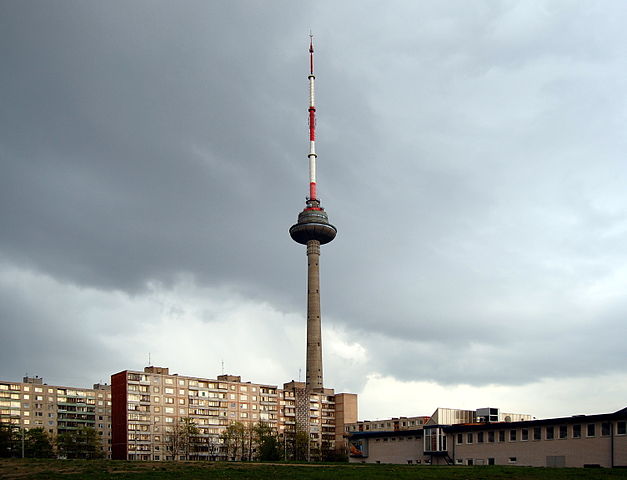
Photo by Marcin Białek
Soviet dominance in Europe was crumbling in 1990 – the Berlin wall fell, Warsaw pact countries left the Communist alliance. The government of the Lithuanian SSR unilaterally declared its independence from the Soviet Union. However, the internationally lenient Gorbachev would not have it. After the building of tension, troops were sent in to squash the rebellion early in 1991.
In the wee hours of January 13 a crowd of thousands was gathered around the Vilnius TV tower to protect the independent Lithuanian media. 14 unarmed protesters were shot and even crushed by tanks. The Vilnius TV tower now houses a museum dedicated to the victims and the events of that day. Combined with the amazing view of the city, and the unique revolving restaurant up in the tower the place is certainly worth a visit.
The Parliament barricade memorial – where Gorbachev broke
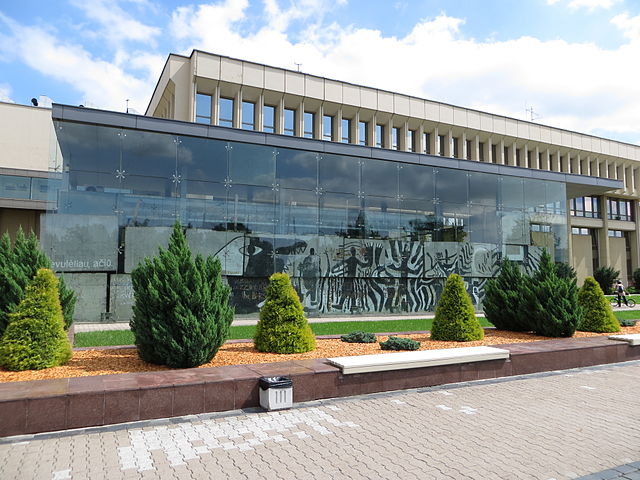
Photo by Bernt Rostad
Another one of the best Soviet sites in Lithuania is also a memento of resistance. It was made famous on the same day. On January 13, 1991 after occupying the television tower the Soviet soldiers and police special forces wanted to turn on the Supreme Council seat. Their goal was to vanquish the leadership of the independence movement once and for all. By morning a huge crowd surrounded the building.
The people started building barricades around the house of parliament. They were helped by construction workers who used their heavy machinery to construct tank traps of concrete slabs. Seeing the resistance the Soviet military backed off. Communist hardliners soon attempted a coup against Gorbachev and Jeltsin, after the failure of which the USSR collapsed for good.
A small portion of this glorious barricade is preserved, and is on display protected by a glass structure. Not a museum itself (that is in the TV tower), but definitely one of the top Soviet sites in Lithuania. Certainly worth stopping by when getting around in the city.

